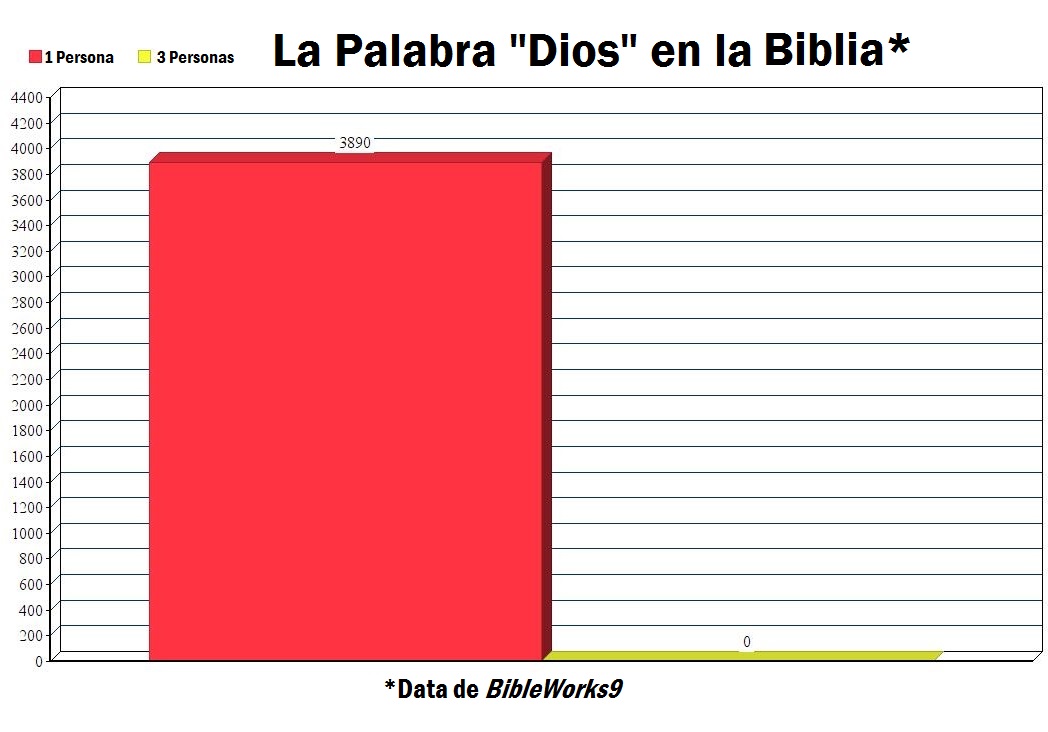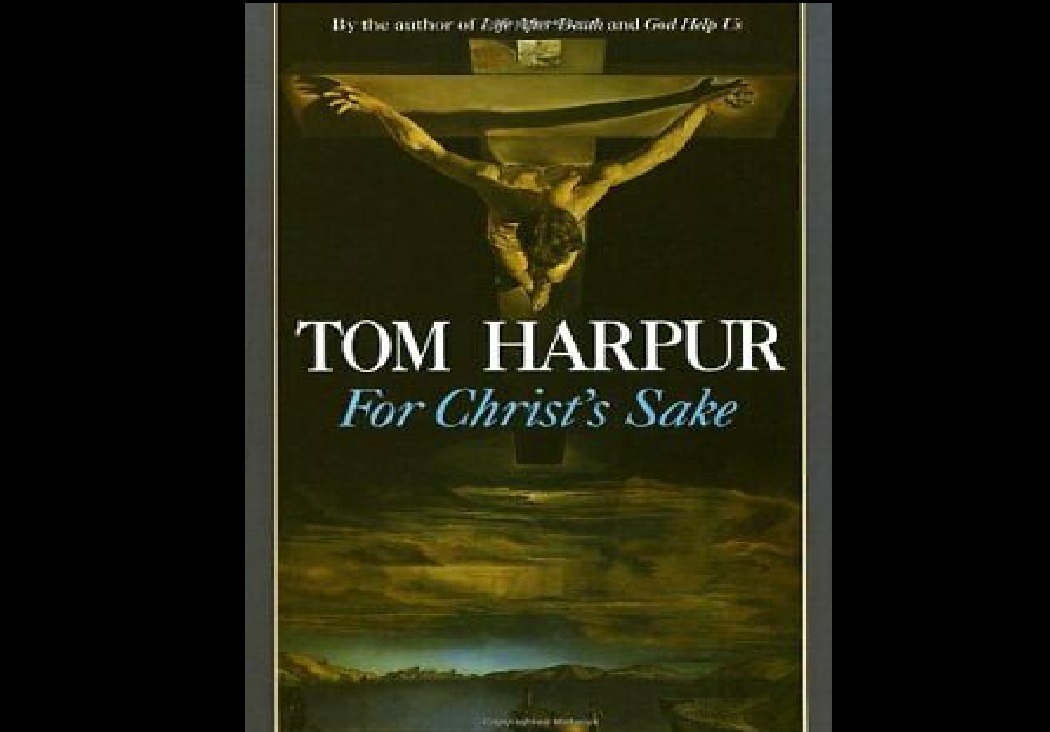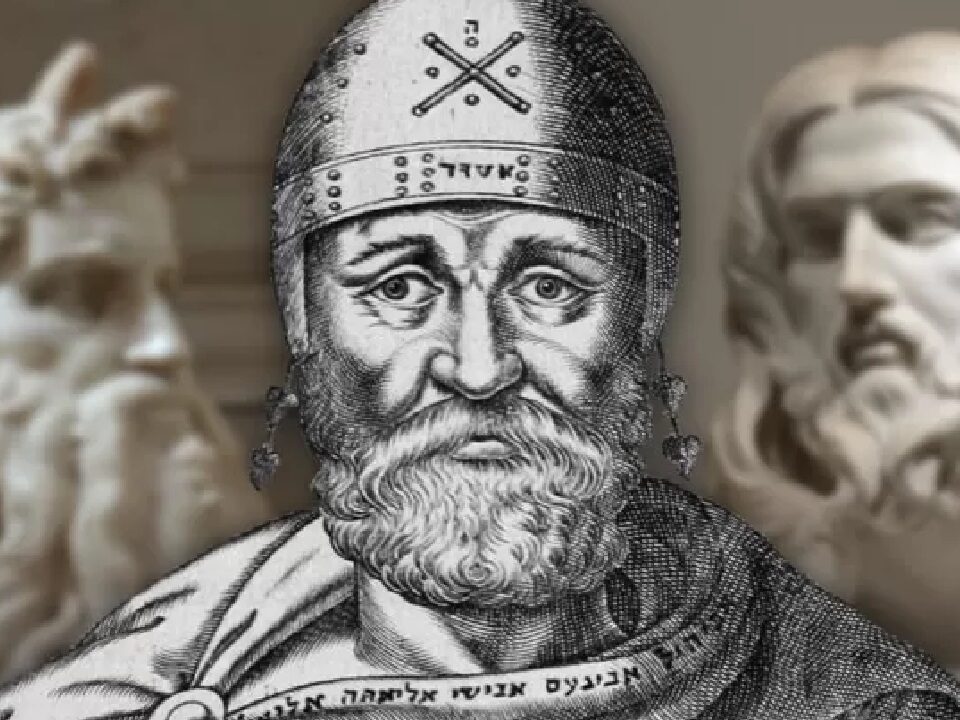
God, Theos: Statistics
September 22, 2021
Trinitarian Tritheists
September 22, 2021Who Do Scholars Say That I Am?

BY JAMES R. EDWARDS
Published in Christianity Today, MARCH 4, 1996
Nothing seems more incongruous than scholarship as a spectator sport and scholars as celebrities. Academic types ply their trade in the solitude of book-lined studies and read long papers before learned societies. If scholarship goes public, it’s strictly low-profile: reviews of published works, an occasional quotation by the news media, or, for the select few, a Nobel, Templeton, or other coveted prize. Otherwise, the business of publicity is ill-suited to this world, a garish intrusion into an art that demands concentration and cognitive judgments.
Or so it has seemed until the public-relations blitz of the Jesus Seminar, a highly publicized scholarly think tank that has met twice yearly since 1985 to vote on the historical accuracy of the sayings attributed to Jesus in the Gospels. The Jesus Seminar has made Jesus into a media event. Seminar members cast ballots on each saying attributed to Jesus in the Gospels, including the Gospel of Thomas, which was discovered in 1945 and is considered by most scholars to represent an erratic gnostic Christianity. A red ballot indicates that a given statement (or something like it) was spoken by Jesus; a pink ballot, that a statement resembles something Jesus might have said; a gray ballot, that, although the ideas may be close to those of Jesus, the statement did not originate with him. A black ballot is a definite negative–the statement was derived from later tradition. All sayings, it is assumed, are black unless they can be “proven” to be a different hue.
The result of the voting is a sensation for the media, but dismal for Bible-believing Christians: 82 percent of the words attributed to Jesus were not spoken by him. Only one statement in the Gospel of Mark (generally regarded by most New Testament scholars to be the earliest and most reliable Gospel) is judged to have come from Jesus: “Give to Caesar what is Caesar’s, and to God what is God’s” (Mark 12:17)!
As for the Gospel of John, “the Fellows of the Seminar were unable to find a single saying they could with certainty trace back to the historical Jesus.” The seminar, in fact, regards “the Fourth Gospel as alien to the real Jesus, the carpenter from Nazareth” (Robert W. Funk et al., “The Five Gospels. The Search for the Authentic Words of Jesus: A New Translation and Commentary,” Macmillan Publishing Company, 1993, pp. 10, 33). Such “breakthroughs” have been widely promoted by the members of the Jesus Seminar in press conferences and releases, appearances on talk shows, interviews, and appeals to tabloid media.
In reality, what is new in the Jesus Seminar is not its low opinion of the historical reliability of the Gospels. The seminar employs the same methods and reaches conclusions similar to those reached by liberal scholarship for decades. What is new–in addition to the marketing mania–is a theological bias against church, faith, and creed. The “church” is portrayed as a medieval backdrop of inquisition and censorship. By contrast, “The Five Gospels,” the seminar’s translation of the Gospels, is “not bound by the dictates of church councils” or “the church’s stranglehold over learning.” With Promethean chutzpah, the seminar hails itself as liberator from the “tyranny,” “oppression,” and “blindness” of Jesus’ Babylonian captivity by orthodox Christianity.
“The Christ of creed and dogma,” according to “The Five Gospels,” “can no longer command the assent of those who have seen the heavens through Galileo’s telescope.” The real Jesus can no longer be hidden behind “the cloistered precincts of faith.” “Old deities and demons” have been swept from the skies. In the Jesus Seminar, “biblical scholars [have risen] to the challenge and launch[ed] the tumultuous search for the Jesus behind the Christian facade of the Christ.” The Apostles’ Creed, asserts “The Five Gospels,” “smothers the historical Jesus,” overwhelming him with the heavenly figure of later Christian conviction. The goal of the seminar is to purge Jesus of the barnacles of ritual, creed, and dogma and sanitize him for the academy. The seminar claims to have dispelled the age of darkness by the light of reason: the wine of myth has become the water of reality.
Such scholarly triumphalism is both melodramatic and misleading. The state of gospel research is far different from the liberation from oppression and conspiracy theories presented in “The Five Gospels” and propagated in media appearances of seminar members. The situation continues to be–as it has been for many decades–an ongoing debate between a naturalistic liberal persuasion that minimizes or eliminates the supernatural in the life and work of Jesus, and a more conservative and evangelical persuasion that is open to the category of transcendence in the life of Jesus–and finds substantial evidence of that fact in the Gospels.
A JESUS FOR EVERY WHIM
The Jesus Seminar is the most celebrated offshoot of a spate of Jesus studies that have emerged in the past decade. That list includes Elizabeth Schussler Fiorenza’s “Jesus: Miriam’s Child and Sophia’s Prophet,” a feminist, liberationist portrayal of a Jesus whose arch enemy is “kyriarchy” and “malestream” theology. Another is Burton Mack’s “A Myth of Innocence: Mark and Christian Origins,” which casts Jesus as a Hellenistic sage. Mack regards the story of Jesus as told by the Gospel of Mark as a “sorry plot . . . a remarkably pitiful moment of early Christian condemnation of the world.” Others include Barbara Thiering’s “Jesus and the Riddle of the Dead Sea Scrolls: Unlocking the Secrets of His Life,” whose Jesus is the wicked priest of Qumran who eloped with Mary Magdalene, and who survived crucifixion by drinking snake poison; Marcus Borg’s “Meeting Jesus Again for the First Time,” whose Jesus is a shaman-like charismatic; John Dominic Crossan’s “Jesus: A Revolutionary Biography,” whose Jesus is a peasant Jewish cynic; and Morton Smith’s “Jesus the Magician,” whose title says it all.
The number and tendencies of such studies leaves no doubt that a “new quest for the historical Jesus” is in full swing. There are, to be sure, others such as John Meier, Eduard Schweizer, Raymond Brown, and N. T. Wright who are producing careful and judicious studies that are exceptions to the above. Nevertheless, this new quest for Jesus has taken up the mantle of the original quest of the nineteenth century, chronicled in Albert Schweitzer’s “Quest of the Historical Jesus” (1906), whose goal was to uncover the “real” Jesus beneath the layers of dogma and ritual that had accumulated over the centuries. That quest, as Schweitzer demonstrated, inevitably left us with a Jesus who looked suspiciously like a reflection of the questers themselves. The Jesus Seminar and Company provide media-grabbing examples of the degree to which contemporary liberal scholarship will go to make Jesus a Karaoke crooner of current trends and ideologies.
Like previous quests for the historical Jesus before it–and this is at least the third one if you’re counting, including the so-called new quest in the 1960s by the students of Bultmann–this quest is dominated by the presuppositions and methods of naturalism. Admissible evidence is “from below” only, that is, what can be known about Jesus from history, literary sources, anthropology, and reason. Evidence “from above”–the faith claims of the Apostles’ Creed, for instance–falls outside admissible evidence, unless such evidence can be verified apart from the authority of church, creed, and confession.
In other respects, however, today’s quest parts company from the one Schweitzer so eloquently chronicled. The original quest was a nineteenth-century endeavor; today’s is late twentieth century. The first quest was European and largely German; this quest is dominated by North Americans. The first was the product of liberal Protestantism; today’s quest involves not only Protestants and Catholics, but also Jews, New Agers, and people of no religious commitment, including Marxists and atheists. Most important, the first quest was sparked by the scientific method whose hallmark was rationalism; this quest is the child of the social sciences and, particularly, the ideologies of liberation and cross-cultural anthropology.
A PEASANT PROTESTER
In broad strokes, who is the Jesus of this contemporary quest? This quest is primarily, if not exclusively, concerned with the social world of Jesus, and the social forces at work in it. The resultant picture is Jesus as a peasant Jew who, like Buddha or one of the Cynic philosophers, espoused a subversive view of traditional wisdom, and who both preached and practiced radical egalitarianism. He also gathered a group of followers and formed them into a movement (which was free from messianic or eschatological expectations). This Jesus had no messianic or divine self-concept, although most of these radical scholars grant that he performed at least some healings by inducing trancelike states because of the powers inherent in him as “a spirit-person.”
This profile obviously omits a large body of the New Testament testimony to Jesus. Supernatural miracles are out, although Jesus is often granted certain psychic powers. Conspicuously absent is any sense of Jesus’ self-consciousness as Messiah or Son of God, as One standing in a unique relationship to the Father endowed with authority to speak and act for God. Equally absent is any saving significance of his death. To be sure, Jesus was crucified as a suspected political subversive, but his death has no atoning significance. Nor is there a resurrection. The accounts of his resurrection and exaltation to the right hand of God are said to be all the result of wishful thinking by the early church.
Crossan insists that Jesus’ body was eaten by dogs–a conclusion for which there is not a letter of evidence in the New Testament or ancient Christian literature! Once again, ideological presuppositions hardened into dogmatism succeed in overriding historical evidence, fulfilling Shakespeare’s dictum that “thinking doth make it so.”
A STRIPPED-DOWN JESUS
The social conditions of first-century Palestine are clearly an important source of knowledge for the life of Jesus. Several results of this sociological approach to Jesus either augment or reinforce our picture of the historical Jesus. The most important is that it anchors Jesus solidly to his Jewish context. Jesus was a first-century Jew–not a post-Enlightenment Aryan Gentile–and that cannot be forgotten or denied. He also was indebted to the Jewish Wisdom tradition and, as his parables reveal, was a chief exponent of it in Israel. Sociological investigation into the significance of synagogue life in Galilee, the role of women, Jewish family structures, rituals of purity and impurity, the taxation system, and the temple cult in Jerusalem provide new insights into the world in which Jesus lived. The sociological approach can yield important results in understanding why first-century Palestine reacted to Jesus and his message the way it did.
All these are positive gains of the new Jesus studies. Still, a social context is only a stage setting; it is not the plot of the play or the actors in it. To assume that a social context–even a correctly perceived one–captures the meaning of a person is like supposing that a resume divulges the essence of an applicant. The chief problem of lives of Jesus exclusively “from below” is their inadequacy. C. S. Lewis observed that “a naturalist Christianity leaves out all that is specifically Christian,” and this is a telling critique of this new quest. Each of the elements in its profile of Jesus–peasant Jew, movement founder, overcomer of social barriers, healer, ecstatic, and sage–is arguably a fair description of some aspect of Jesus. What is false is the attempt to package the list as the sum of the historical Jesus.
The chief flaw in this new quest is its lack of openness to, or even interest in, the possibility that Jesus was God incarnate, as the New Testament clearly indicates. The social world of Jesus, important as it is for raw data, cannot account for who he was. That Jesus was a peasant or teacher or movement founder is secondary to the core claims of the New Testament that he was the unique incarnation of God by whose life and death salvation is freely offered to the world. Every page of the New Testament clamors for this deeper understanding. Every reconstruction of Jesus that denies this is a shadow, at best, of something more essential. The question the New Testament puts inescapably to readers is “Who do you say I am?” (Mark 8:29), not “What do you make of my social context?”
Finally, a purely social reconstruction of Jesus cannot account for the effect that Jesus has had on history. To assume that the earnest though bewildered Jesus of the Jesus Seminar and Company could have affected the course of human history as Jesus Christ really has is like stumbling upon a crater and supposing it the result of a cherry bomb.
CREATED IN WHOSE IMAGE?
The crucial error of these various critical quests of the historical Jesus is the assumption that the Jesus presented in the Gospels is essentially the fiction of the early church and is discontinuous with the historical Jesus. This is the flaw of discontinuity.
Modern scholarship has correctly shown that the Gospels are not strict biographies, but presentations of Jesus told from the standpoint of faith and for the purpose of furthering faith. The Gospels are part of the kerygma, the proclamation of the early church, which means that Jesus can be known only through the testimony of his followers. Liberal scholarship errs, however, in assuming that this testimony results in a distortion of the historical Jesus. Contrary to the assumption of discontinuity, the New Testament not infrequently testifies to the respect with which the Jesus tradition was held (1 Cor. 7:6, 12, 25). There is reason for confidence that the early church acted as custodian of the Jesus tradition rather than as corrupter of it.
This quest of the historical Jesus has a head of steam that has been building for more than two centuries. In the history of the debate, four general positions have emerged. To illustrate them, imagine four pictures on a wall: the first is a photograph of Jesus, the second an accomplished portrait of Jesus, the third an abstract painting, and the fourth a mirror.
The first represents the literalist who believes the Gospels deliver an exact, photographic likeness of Jesus. The “portrait” represents a moderate critical scholarship that recognizes that the Gospels present various facets of Jesus, interpretations of Jesus from the perspective of faith that nevertheless stand in trustworthy continuity with the Jesus of history. The “abstract painting” represents a radical critical approach that affirms that very little can be known about Jesus beyond the fact that he existed. The “mirror” in the fourth frame represents a subjectivist approach that regards the study of Jesus as essentially autobiographic: statements about Jesus are really statements about the people who make them.
The Jesus Seminar (and other studies mentioned) belongs to one of the last two frames. Either their critical theories permit only the barest evidence and result in very selective outlines of Jesus, or they fail altogether to find a historical figure and compensate by projecting a Jesus of their own values and ideologies.
The photographic likeness is not an appropriate analogy, either. God has chosen to give us four Gospels, not one, each of which presents a unique profile of Jesus. A careful reading reveals them to be portraits of Jesus, each defined by a special missionary purpose. Through the agency of the Holy Spirit, the material included in each has been chosen and shaped to serve the dominant theme. Matthew, for instance, writing from a Jewish Christian perspective, was compelled to demonstrate that Jesus was the fulfillment of the messianic prophecies of Israel. Luke, on the other hand, was writing more explicitly for the Gentile mission, and was compelled to demonstrate the universal lordship of Christ.
It is, of course, obvious to any sensible person that the same Jesus is the subject of all four of the Gospels, but the uniqueness of each of the four portraits makes it very difficult to produce from them a single harmonized life of Jesus. The photographic likeness is not dismissed out of irreverence or devaluation of the gospel record, but simply because it is inappropriate to what God has given us in the Gospels. The Gospels are not distortions of the historical Jesus, but faithful depictions of him.
The modern critical distinction between the Jesus of history and the Christ of faith is an essentially artificial and untenable distinction. In its endeavor to discern the historical Jesus, critical scholarship has exaggerated to an unwarranted degree the differences between the Jesus of history and the Jesus who is presented in the Gospels. The following four arguments provide convincing evidence for the historical reliability of the Gospels.

